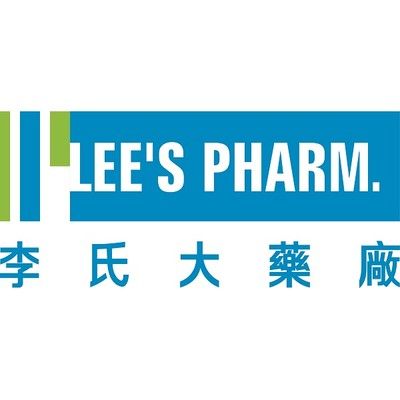预约演示
更新于:2025-05-07
Hemocoagulase Atrox
蛇毒血凝酶
更新于:2025-05-07
概要
基本信息
药物类型 酶 |
别名 Batroxobin、Haemocoagulase、Hemocoagulase + [5] |
作用方式 调节剂 |
作用机制 纤维蛋白原调节剂、凝血途径激活剂 |
治疗领域 |
在研适应症 |
非在研适应症 |
原研机构 |
在研机构 |
非在研机构 |
权益机构- |
最高研发阶段批准上市 |
首次获批日期 中国 (2006-05-29), |
最高研发阶段(中国)批准上市 |
特殊审评- |
登录后查看时间轴
关联
7
项与 蛇毒血凝酶 相关的临床试验CTRI/2023/05/053000
A prospective, comparative, randomized, parallel arm, open label, control group study toevaluate the safety and efficacy of Botroclot in surgical wound closure in C-Section
开始日期2023-05-30 |
申办/合作机构 |
CTRI/2023/03/050888
A Prospective, Open-Label, Multi-Centred, Comparative, Randomized Controlled Trial to Evaluate The Safety And Efficacy of Botroclot In Diabetic Foot Ulcers
开始日期2023-03-24 |
申办/合作机构 |
CTRI/2022/04/041767
Evaluation of synergistic effect of Tranexamic acid and Haemocoagulase on intra-operative blood loss during Orthognathic Surgery.
开始日期2022-04-15 |
申办/合作机构- |
100 项与 蛇毒血凝酶 相关的临床结果
登录后查看更多信息
100 项与 蛇毒血凝酶 相关的转化医学
登录后查看更多信息
100 项与 蛇毒血凝酶 相关的专利(医药)
登录后查看更多信息
312
项与 蛇毒血凝酶 相关的文献(医药)2025-04-11·Medicine
Acute myocardial infarction after batroxobin treatment of sudden sensorineural hearing loss: Case report
Article
作者: Liu, Ping ; Liu, Yingxin ; Lu, Yinping ; Tang, Weiliang
2025-01-01·Clinical and Applied Thrombosis/Hemostasis
The Impact of Hematologic Disorders on the Severity of Cerebral Venous Sinus Thrombosis: A Comparative Study
Article
作者: Ding, Yuchuan ; Ji, Xunming ; Meng, Ran ; Wang, Mengqi ; Huang, Xiangqian
2024-08-01·CNS Neuroscience & Therapeutics
Effects of batroxobin on the antithrombotic system in patients with cerebral venous thrombosis: Clues to mechanisms
Article
作者: Song, Siying ; Ji, Xunming ; Guo, Yibing ; Meng, Ran ; Zhang, Xiaoming ; Ding, Yuchuan ; Lan, Duo ; Huang, Xiangqian ; Wang, Mengqi ; Jiao, Baolian
6
项与 蛇毒血凝酶 相关的新闻(医药)2025-01-28
尊敬的各位朋友、亲爱的各位同事
新年好!
龙腾虎跃迎新岁,巳巳如意兆福年
在新春佳节到来之际
我谨代表『李氏大药厂控股有限公司』及其附属公司的全体董事
向大家致以新年祝福和诚挚的问候
给大家拜年啦!
蛇年行大运 财源滚滚来!
蛇行天下 好运年年!
蛇年如意 心想事成!
2025乙巳年是一个有趣的年份
蛇代表着医学的智慧
治愈和对生命的敬畏
是人类的好朋友
在古希腊神话中蛇被认为具有识别草药
带来治愈的神秘能力
李氏大药厂成立之初的第一个产品抗栓酶
在研一类新药安菲博肽
上市产品速乐涓®
均是从蛇毒研制创新提取的产品
为从源头把控产品的质量
兆科药业在黄山
建立了专业的毒蛇养殖基地
值此我也向基地的工作人员
致以新春的慰问
河山添锦绣
星光映万家
2025乙巳年不仅仅是一个时间的更迭
更是李氏大药厂正式步入而立之年
迈向新辉煌的起点
展望新的一年
我们携手共进
以更加坚定的步伐
积极履行社会责任
为研制出更多改善人们生活质量的创新产品
造福大众而努力奋斗!
往期回顾
◆
共迎新春华章!李氏大药厂董事总经理李烨妮女士给大家拜年啦!
◆
北方小年 | 岁末年初的温馨序曲
◆
南方小年 | 灶王送福,思念如糖暖人心
◆
影响因子40.8!索卡佐利单抗或安慰剂联合卡铂和依托泊苷一线治疗广泛期小细胞肺癌的III期临床研究成果发表国际知名学术期刊!
关于李氏大药厂
- 亞太地區最具創新力的上市企業 -
李氏大药厂控股有限公司(简称“李氏大药厂”或“集团”, 股份编号: 00950)成立于1994年,是一家结合了研发驱动和市场导向的生物医药集团公司,总部位于香港。李氏大药厂于2002年7月在香港联合交易所(简称:“港交所”)创业板上市,并于2010年5月成功转至港交所主板上市。李氏大药厂在中国大陆拥有两大综合性生产研发基地,即:兆科合肥基地(位于安徽省合肥市高新区)和兆科广州基地(位于广东省广州市南沙区),目前员工总数超过1100人。
李氏大药厂立足中国大陆,放眼国际,通过坚实和稳固的投入建设,全面覆盖整合了药物研发、临床研究、药政注册、生产制造、销售与市场推广等各个环节。集团集中于心血管科、妇科与产科、儿科、罕见病、肿瘤科、皮肤科、精神科等多个重要疾病领域开发不同阶段的专利新药和高端仿制药。李氏大药厂与20余家国际公司建立了广泛的合作关系,目前在中国大陆、香港、澳门及台湾地区推广及销售25种包含专利新药、仿制药物及授权引进的国外已上市进口药品。
李氏大药厂现有超过40个处于不同开发阶段的产品,既有自主研发产品,也有通过来自美国、欧洲及日本等公司通过授权引进进行研发、生产以及商业化的产品。
李氏大药厂的使命是致力于研发新药,治疗顽疾,改善生活质量,为患者带来福音,目标成为亚洲成功的生物制药集团,提供治疗疾病和改善生活质量的创新产品。
下滑查看更多
免责声明:本公众号发布或转载企业宣传资讯,仅供读者参考之用,并不构成收购、购买或认购依据,并不构成任何个人化的投资劝诱或建议。因本公布全部或任何部分内容而产生或因倚赖该等内容而引致的任何损失不承担任何责任。
与“李”同行
招商热线
020-39062882
临床3期医药出海
2024-12-02
·药时代
2024年12月2日,远大生命科学集团有限公司(简称“远大生命科学”)和Cali Biosciences Co., Ltd.(加立生物科技有限公司,简称“加立生科”)共同宣布就CPL-01(罗哌卡因缓释注射剂)达成独家商业化合作。
根据协议约定,远大生命科学将向加立生科支付首付款,以及里程碑款;同时加立生科授权远大生命科学为其CPL-01项目在中国的独家商业化合作伙伴,并根据协议约定向远大生命科学支付市场推广服务费。
CPL-01多项指标优异
围术期镇痛药物有望迎来新选择
CPL-01是基于独特的“PG-Depot”创新技术平台开发的罗哌卡因缓释注射剂。
罗哌卡因属于酰胺类局部麻醉剂,临床上主要用于外科手术区域阻滞和急性术后镇痛等。传统罗哌卡因单次给药量的持续时间无法满足术后长效镇痛的临床需求,常用临床手段包括频繁给药或通过设备输注镇痛药等方式。目前全球范围内尚无已获批上市的罗哌卡因长效制剂。
为满足围手术期长效局部镇痛的临床需求,CPL-01通过PG-Depot技术平台,实现了药物的缓释、单次局部给药后,达到术后72小时长效镇痛,同时减少阿片类药物的使用。此外,其无需使用镇痛泵等特殊设备的特点,便于临床使用,减轻患者负担。临床II期数据显示,CPL-01的受试者在术后疼痛强度评分与减少阿片类药物使用方面均较安慰剂组更优,且安全性表现良好。
Exparel(布比卡因脂质体注射液)是全球首个获批的长效局麻药。相比于布比卡因,罗哌卡因的中枢神经系统和心血管毒性更低,安全性更优。同时,CPL-01在多个手术模型中显示出较为一致的达峰时间,药物释放更稳定。
目前,CPL-01针对疝气修补术和拇囊炎切除术后镇痛临床试验正处于国际多中心III期阶段。
市场规模持续增长
强强联手释放协同效应
随着全球人口寿命增长以及医学诊疗技术与服务能力持续提升,外科手术量及伴随的外科围手术期的镇痛需求预计将有所增长。而CPL-01作为罗哌卡因长效注射液的创新产品,有望满足这一市场需求。
从已上市药物来看,2023年Exparel全球销售额达到4.8亿美元,折合人民币约34亿。
在国内,国家统计局数据显示,2022年我国医疗卫生机构住院病人手术人次达到8271.75万人。而2023年一项对中国大陆百余医疗中心的横断面研究显示,手术后中重度疼痛的发生率达48.7%,包括32.2%的患者患有严重术后疼痛,国内手术数量增长成为术后镇痛药物需求提升的驱动因素之一。据开源证券研究所统计,受惠于不断增长的临床需求及市场推出的新药数目不断增长,预计中国术后镇痛药物市场规模从2026年到2030年分别达到212亿元到306亿元,2022年至2026 年的复合年增长率为13.9%,2026年至2030年的复合年增长率为9.6%。
远大生命科学董事长冯增辉先生表示:“围术期是远大生命科学的主要产业布局之一。远大生命科学本次与加立生科的合作,进一步丰富了公司镇痛赛道的产品管线,强化围术期领域领导品牌和产品集群,通过创新产品,更好地满足临床需求,丰富术后镇痛领域的治疗选择,惠及广大患者”。远大生命科学执行总裁兼营销中心总经理王志明先生表示:“此次与加立生科达成合作是双方战略的契合,CPL-01是远大生命科学引进的首个长效局部镇痛产品,希望在我们的共同努力下,让最新的产品真正触达每一位临床医生,帮助患者减轻病痛”。
加立生科董事长林帝邦先生表示:“很高兴与远大生命科学就CPL-01在中国市场达成商业化合作。远大生命科学集团是国内围术期领域的领军企业之一,我们对与远大生命科学集团的合作及CPL-01的市场前景充满期待和信心”。加立生科首席执行官陈柏州先生表示:“相信本次合作将充分发挥双方优势,在未来加快推进CPL-01的商业化,为术后镇痛管理提供更多治疗选择。同时,我们会持续推动国际市场的开发,助力全球患者获益最大化”。
远大生命科学在围术期领域深耕细作,尤其在止血与镇痛两大赛道上展现出卓越实力。公司核心产品矛头蝮蛇血凝酶(商品名巴曲亭®)连续多年保持市场份额领先,新产品重组人凝血酶(商品名:泽普凝®)已于2024年上市,是国内唯一采用基因重组技术生产的重组人凝血酶。远大生命科学已经获得国内独家销售权益,公司将通过产品集群优势持续夯实其在国内止血领域领导者地位。
在镇痛领域,公司拥有国家一类新药注射用胶原酶和国内独家品种胶原酶软膏等多个核心产品管线,快速拓展市场同时开展多项新适应症、新人群的上市后研究,持续挖掘核心产品管线潜力。公司聚焦镇痛领域发展,致力于多模式镇痛、长效改良及差异化创新,持续巩固强化其在围术期领域的领军优势。
此次与加立生科就CPL-01达成独家商业化合作,将进一步丰富远大生命科学在镇痛领域的产品管线,并与管线中现有产品形成协同效应,助力公司打造符合临床需求的高价值产品矩阵。
经过多年积累,远大生命科学已在镇痛赛道建立了完善的营销网络,凭借公司成熟的商业化运作体系和团队的卓越执行力,公司将加速推动CPL-01的市场拓展和临床应用,让更多患者受益于这一创新成果。
远大生命科学集团有限公司是一家以创新为源动力并具有扎实深厚工业基础的国际化医药健康企业集团。历经多年的发展,远大生命科学已实现血液制品、益生菌、疫苗、医学营养和围术期五大产业布局。远大生命科学坚持以“自主创新研发+外部精准引进”为发展理念,关注全球新药研发领域前沿技术,基于临床价值、前瞻性布局特色产品矩阵以及覆盖研发全周期的差异化产品管线。在血液制品、活菌药物、围术期止血、疫苗等多个领域保持行业领军地位,目前拥有核心创新产品管线30余个。公司在北京、成都、南京、武汉和杭州设立了四个研发中心和九个核心技术平台,9个项目获得药学突破,30多个品种正在临床开发阶段,持续为公司创新发展提供新动能。远大生命科学已在全国近十个城市设立了高标准建造、高水平质量管理的生产基地,销售网络覆盖全国所有省市和几十万家终端,血液制品畅销全球,累计出口超过20多个国家,并持续加快开拓海外市场。
血液制品领域以旗下高新企业远大蜀阳为依托,在研发能力方面正在形成了从血源到重组技术平台的迭代,产品涵盖白蛋白、免疫球蛋白和凝血因子三大类别,是我国血液制品行业中血浆综合利用率最高、品种最多、规格最全的企业之一。远大蜀阳打造了国际领先的工业4.0血液制品智造基地,实现全产品链市场需求的覆盖,成为了全球领先的血液制品产业化基地。公司获得国内独家商业化权益的全球创新治疗血友病组织因子途径抑制物(TFPI)单克隆抗体KN057已在国内启动两项三期临床试验,并于2024年获得美国食品和药品监督管理局(FDA)授予的孤儿药资格认定。
在益生菌领域,公司搭建了拥有自主知识产权的万株功能菌菌库,正在进行新一代微生态活菌药物的开发。核心企业杭州远大治疗领域聚焦肠胃管理及代谢领域,新厂竣工投产后将成为亚洲发酵规模最大,商业化菌株最多,连线化、自动化程度最高的活菌药物生产基地。公司核心产品双歧杆菌四联活菌片(商品名:思连康®)市场占有率常年保持行业领先,被临床治疗指南列入高等级推荐。在代谢领域用于治疗高尿酸血症伴痛风的一类创新药:聚乙二醇化尿酸酶注射液正在开展临床II期研究。
疫苗领域,远大生命科学已实现研发、生产、销售纵向一体化的国际化产业布局,拥有自主知识产权的重组蛋白、新型佐剂、细菌疫苗和新型技术疫苗四个研发技术平台,现有一类创新疫苗研发管线十余项。其中,自主研发的重组乙型肝炎治疗性疫苗II期临床试验已于2024年正式启动,是国内第一款获批18岁以上人群临床的创新型治疗性乙肝疫苗。此外,按照全球最高标准设计的疫苗产业化基地建设已在杭州市启动。该基地全部建成后,可满足8-10个新型疫苗商业化生产,预计年产值可达百亿以上。
医学营养领域,远大生命科学以脂肪乳复杂制剂平台为支撑,聚焦人口老龄化和肿瘤慢病化带来的临床需求,着力打造以氨基酸为基、肠外营养为体、全周期营养管理的管线布局。现在已经完成十余个创新药物立项并正在进行产业化建设。
远大生命科学以“全心全意为人民服务”为使命,始终秉承“以患者和消费者为中心,以科研为基础,以市场为导向“的经营宗旨,以“一剂药,两条命”的理念切实履行企业社会责任,在生命科学领域创造一个全球化创新型企业。
点击这里,更多了解远大生命科学!
引进/卖出临床3期临床2期
2024-08-19
·同写意
本次以“突破瓶颈 打造医健产业新引擎”为主题,设一场主论坛和八场主题论坛,从前沿创新突破、临床应用拓展、工艺技术优化、商业化开发等多个全新视角推动CGT技术开发与应用,成就健康产业未来。
在《2024新财富500创富榜》上,62岁的胡凯军以371.2亿人民币的财富位列第78位。
在其身后的第85位,是大名鼎鼎药明康德掌舵人李革;而榜单第一位的钟睒睒,手握万泰生物和农夫山泉两张王牌,已经四度蝉联榜首。
三位富豪的共同点都是在医药赛道进行了长久的布局,钟睒睒和胡凯军都是同时布局传统产业和健康产业,区别在于胡凯军过于低调和神秘了。
图源:来自互联网
胡凯军是谁,百度百科显示财富来源制药,远大集团董事长。再明确点说,手握华东医药和远大医药两家医药上市公司。
据远大集团官网介绍,中国远大集团目前主营业务涵盖医药健康、生态农业、油脂、贸易、置业投资等领域,其中医药健康排在第一位,也是远大集团的重要战略方向。
远大集团在健康领域的布局涉及创新药、中药、化药、生物药、医疗器械和医疗美容等几乎全品类,销售则是国内和国际市场并举发展。
二十多年来,没有医药背景的胡凯军,以并购方式拼出了一个医药健康帝国。其眼光和手腕,也是中国式MNC医药巨头崛起的一个重要范本。
1
并购狂徒
“远大系”帝国版图
远大医药健康的版图征程,始于并购。
在中国医药行业,“远大系”是无可争议的低调派,但也被业内称为“并购狂人”。
今年5月,华东医药董事长吕梁曾公开回应:“把我讲成‘并购狂人’,我认为其实是不公正的。为了企业的发展,抢夺一些市场机遇和抢夺一些时间,取得可持续发展的优势,并购是必要的。”
言语间,吕梁对于资产并购的态度与远大系一脉相承。
翻开远大系的医药产业布局,国内减肥药获批第一股A股上市公司华东医药(000963.SZ)、核药龙头香港上市公司远大医药(00512.HK)、中华老字号药堂雷允上、远大生命科学等各领域前排企业赫然在列。
天眼查数据显示,远大系医药健康板块的成员企业已经多达数百家。而这些,绝大多数是通过并购收入麾下。
作为“远大系”的核心资产,华东医药和远大医药是其左膀右臂,从其发展及波澜壮阔的并购历程中,我们可以洞见远大医药帝国的大致轮廓。
8月4日,华东医药宣布逾10亿拿下艺妙神州CAR-T产品独家商业化权益,继续深耕肿瘤领域;7月22日,华东医药宣布全资子公司博华制药拟以5.28亿元超5倍溢价收购老牌苗药企业贵州恒霸药业100%股权。
实际上,作为远大最重要的医药健康上市平台,华东医药自身也是胡凯军并购而来。
华东医药前身为创建于1993年的杭州医药站股份有限公司,1996年实现与华东医药资产重组,在1999年更名为华东医药股份有限公司。
1998年远大集团以9712万元受让华东医药55.03%的股权,成为华东医药的控股股东及实际控制人。
华东医药是胡凯军布局医药产业上市公司的第一枪,这一枪,直接精准狙击命中十环。
仅仅一年后的2000年1月,华东医药成功登陆A股,成为远大集团旗下第一家上市公司。目前,胡凯军通过远大集团持股比例为41.66%。
华东医药上市后,胡凯军以此为抓手,开启了远大系在医疗健康领域的并购征程。
根据东方财富数据显示,自2015年8月起,华东医药参与并购数量就多达40起。
其中仅有2015年9月对美国克雷默斯城市制药公司的收购及2019年10月对浙江佐力药业股份有限公司18.6%股权收购显示失败,其余收购兼并计划均显示完成或正在进行中。
多年来,华东医药并购涉及甚广,涉及肿瘤、内分泌、自身免疫以及医美等各领域。经过多年的并购发展,华东医药已经在肿瘤、糖尿病、自免、医美等领域形成领先优势。
华东医药自2015年8月起并购情况
数据来源:东方财富Choice数据
胡凯军的另一员“猛将”远大医药同样是“买买买”的坚定践行者。
就在华东医药公布收购贵州恒霸的5天前,远大医药正式公布分别完成对天津田边制药、百济制药100%股权的变更登记。耗资7.84亿元,天津田边、百济制药正式成为远大医药的全资子公司。
远大医药虽然名字中有“远大”,但也是收购来的。其源自中国最早的国有医药企业武汉制药厂。
2002年,远大集团作为战略投资者出资6000万元,正式注资武汉制药厂,成为其第一大股东;2008年,远大集团将武汉制药厂借壳注入香港上市公司曼盛生物科技,武汉制药厂正式上市,并更名为“远大医药”。
自上市以来,远大医药至少完成了23次成功并购,颇有大开大合之势,涉及金额和品类与华东医药比各有千秋,其中甚至有携手鼎晖投资收购澳洲上市公司Sirtex这样的百亿并购。
远大医药上市以来并购情况(部分) 《多肽链》整理
目前远大医药核心产品涉及“制药”“核药及心脑血管介入诊疗科技”“合成生物工业”三个业务领域。
16年时间,远大医药通过并购深入到心脑血管、眼科、呼吸道、肿瘤治疗、喷剂、医疗企业等领域,并购触角遍及国内外。
当然,远大系的医药健康版图远不止此。除了两家上市公司,远大系尚有雷允上和远大生命科学两个版块,但也都和收购不无关系。
1997年远大集团出资6029万元收购了雷允上(苏州)药业集团70%的股权,并与苏州药业集团共同组建雷允上药业有限公司。
作为中药老牌字号,雷允上是中国四大药堂之一,因为各类复杂原因,市面上冠名“雷允上”的公司有三家,远大集团控股了最为“根正苗红”的苏州雷允上,其拳头产品就是著名的“六神丸”,在中国中药大品种科技竞争力排行榜中位列第二位。
1998年,雷允上药业集团收购了常州雷允上,2020年,雷允上药业集团全资收购了安徽誉隆亚东药业有限公司,后更名安徽雷允上。
雷允上经过多年内部培育外部并购的方式,已经聚焦大病种、培育大品种,丰富产品集群,形成多领域龙头,产品覆盖多个临床治疗领域,包括呼吸系统、泌尿系统、补益类、消化系统、妇科儿科、脑科、心血管和抗肿瘤。
远大生命科学则是远大系的又一个利器。
远大生命科学聚焦免疫及感染、围术期及重症、血液系统、消化及代谢和创面管理五大治疗领域,致力于研发生产高端血液制品、新型重组疫苗、新一代活菌制剂、纳米靶向制剂、可降解医疗器械及高价值原料药等。
其重要组成部分远大蜀阳药业是国内唯一一家能够出口狂犬病人免疫球蛋白的厂家,也是绝对稀缺的血液制品工厂,是2001年胡凯军全资收购而来。
2013年胡凯军又收购了以“双歧杆菌四联活菌片”为主导产品的杭州远大;2020年,杭州远大又并购重庆泰平药业(后更名远大重庆)。
以上,才是胡凯军医药健康帝国的全貌。
通过精准、老练、前瞻性的资本布局,胡凯军把“买鸡生蛋”用到了极致,无论是华东医药、远大医药,还是雷允上远大生命科学,都是一步步并购布局而来。
2
倍数增长
资产经营很能打
这个没有医药背景的巨头,用时26年硬是血拼出了一片医药江山。打江山容易,守江山难,远大系上限如何,看的是经营能力。
显然,胡凯军在经营上面肯定有一手。华东医药和远大医药两家上市公司是远大系经营情况的最佳样本。
数据显示,自2000年上市以来,华东医药营收从最初的16.18亿元增长至2023年的406.24亿元,翻了25倍;净利润也从0.45亿元增长至28.39亿元,翻了63倍;
市值上,华东医药同样取得了大幅增长,目前其总市值500亿元上下,相较刚上市的40.15亿元翻了12倍多。
数据来源:东方财富Choice数据
指数级增长的背后,和多年来的并购布局不无关系。
以华东医药2023年年报为例,医药工业占比近七成,绝大部分得益于之前并购医药工业方向上,也证明并购后相关资产实现了放大效应,资产运营管理能力可见一斑。
而远大医药,业绩增长幅度同样惊人。2023年公司营收105.3亿港元,净利润为18.8亿港元。上市以来,营收增长39倍,净利润增长75倍。市值也从2.15亿港元增长目前的160亿港元,增长约73倍。
数据来源:东方财富Choice数据
和华东医药一样,多年的并购支撑了业绩的狂奔式增长。
整体来看,自上市到2023年,华东医药和远大医药的年营收复合增长率分别是28.46%、153.5%,放在整个医药行业也算是炸裂的存在。
而两大非上市公司版块,同样很能打。
远大生命科学尽管没有具体数据,但是从整体四大布局情况,还是能对其业绩情况及潜力进行简单分析。
在疫苗领域,远大生命科学无佐剂人用狂犬病疫苗已经畅销多年,又是国内唯一一家能够出口狂犬病人免疫球蛋白的厂家,有稀缺性和增长潜力。
在微生态活菌药物领域,杭州远大生物已成为微生态活菌药物领域的头部领军企业。
在血液制品领域,远大蜀阳是国内绝对少数血液制品企业寡头之一,其新建的血液制品现代化工厂拥有亚洲第一,全球前十的单体产能。
在化药领域,核心产品如巴曲亭®在国内止血市场占有率稳居第一,安抚®是第一个完全实现国产化的靶向镇痛注射剂。
远大雷允上则在近年来走上了中医药现代化的步伐,除了六神丸、灵宝护心丹等传统产品外,在管线上覆盖了呼吸系统、泌尿系统、补益类、消化系统、妇科儿科、脑科、心血管和抗肿瘤八大临床治疗领域,立体化产品格局已经齐备。
无论怎么看,胡凯军手里医药健康资产的牌面都称得上“富裕”。
3
宏大布局
中国式MNC的未来
远大系的扩张是多线并行,看似不相关的并购比比皆是,一个个分散的点很难描绘出一个蓝图。但倘若眼光再抬高一些,胡凯军的精准布局令人惊讶。
华东医药聚焦肿瘤、内分泌及自身免疫三大核心治疗领域,辅助医美领域布局,已经形成比较稳健的基本盘。
在肿瘤领域,华东医药敏锐地站在了行业研发前端,目前已建立了涵盖小分子化药、抗体药物等。
其中PROTA抗体融合蛋白DR30206在国内启动临床试验,用于治疗晚期实体瘤。目前,全球尚无DR30206同类三抗药物上市,华东医药属于全球首创。
去年,华东医药从ImmunoGen引进的全球首创ADC新药索米妥昔单抗注射液(用于治疗复发性卵巢癌),在中国的上市许可申请也已获受理;另外,华东医药首个自主研发的PROTAC项目HDM2006(蛋白降解剂),已于2023年9月进入到IND开发阶段。
在糖尿病治疗领域,华东医药是国内名副其实的“扛旗者”,开发了GLP-1R激动剂利拉鲁肽生物类似药及司美格鲁肽注射液生物类似药等。
图源:来自互联网
2023年3月,华东医药的利鲁平获NMPA批准,用于成人2型糖尿病患者的血糖控制,成为首款获批的国产利拉鲁肽生物类似药;
今年3月华东医药旗下的HDM1005注射液获得临床试验默示许可,适应症为超重或肥胖人群的体重管理、2型糖尿病。
在自免领域,华东医药已拥有生物药和小分子创新产品10余款,产品管线适应症已涵盖系统性红斑狼疮(SLE)、银屑病、特应性皮炎、冷吡啉相关的周期性综合征等,是国内自身免疫性疾病领域种类覆盖较为全面的医药公司之一。
华东医药对于市场的敏锐感知还体现在医美领域。2018年收购英国的Sinclair,随后推出有名的“少女针”伊妍仕;2019年收购美国医美公司R2约26.60%的股份;2020年收购Kylane20%的股权等。
2023年度,华东医药在医美板块整体实现营业收入24.47亿元,同比增长27.79%,俨然已是国内医美领域发展的引领者。
整体来看,华东医药目前布局情况呈现阶梯式,引领创新药势头正强,后劲较足。
远大医药同样布局较广:在心脑血管急救,眼科,呼吸科,生物技术产品及精品原料药这些传统板块布局较早,已经拥有多个市场领先的高端产品和专利药物。
心脑血管板块,远大医药是“国家基本用药生产基地”“国家战备储备急救用药生产企业”“国家小品种药(短缺药)集中生产基地建设单位”,拥有近30个品种,其中14个品种纳入了中国国家急抢救药品目录,16个品种纳入了短缺药品目录,产品管线数量位居行业前列。
图源:来自互联网
在眼科板块产品接近30款,覆盖了化学制剂、中药制剂以及眼用健康产品,包含处方药、OTC、器械、消费品等;
在呼吸及重症抗感染板块,在售产品超过10种,覆盖鼻炎、咽炎、支气管炎、哮喘等多个适应症,尤其对于新冠患者的对症治疗,基本可实现病程全覆盖。金嗓系列产品为全国独家产品,覆盖喉科全病种。
生物科技领域,远大医药以氨基酸产品为核心业务,定位于全球高品质氨基酸优质供应商。核心产品半胱氨酸系列市场地位和产能规模位居世界第一,牛磺酸产能规模位居世界第二。
而在创新药管线布局方面,核药抗肿瘤是远大医药的一大优势,以并购手段快速进入市场,已经联合Sirtex,并先后与核药创新企业Telix和全球最大的核原料供应商之一ITM达成国际战略合作,搭建了具有国际化一流水平的肿瘤介入和放射性核素偶联药物(RDC)研发平台。
目前在该管线拥有14款创新产品,包括有9款在研RDC,其中4款RDC产品在国内进入临床阶段,3款处于临床三期。
此外,易甘泰®钇[90Y]微球注射液作为远大医药的重磅全球创新产品,已在全球 50多个国家和地区被广泛应用,超过15万人次使用。
值得一提的是,远大医药还在精准介入器械方面已经布局16款产品,其中通路管理方向已经有7款产品在中国获批上市,已经实现(无源+有源)创新器械平台建设,形成了中国四中心、海外多基地的研发生产布局,同时在国内国外积极进行新的研发中心与平台的建设。
再叠加前面雷允上和远大生命科学在中医药领域和生命科学的布局,可以很清楚地看到。远大系已经覆盖了几乎所有热门病种和赛道,并且大部分已经整合完成,开始发力。
现在回过头来看,胡凯军的敏锐、眼界和资本运营能力,正是中国式MNC成长所需要的。
同写意媒体矩阵,欢迎关注↓↓↓
并购细胞疗法免疫疗法
100 项与 蛇毒血凝酶 相关的药物交易
登录后查看更多信息
研发状态
批准上市
10 条最早获批的记录, 后查看更多信息
登录
| 适应症 | 国家/地区 | 公司 | 日期 |
|---|---|---|---|
| 凝血障碍 | 中国 | 2006-05-29 |
未上市
10 条进展最快的记录, 后查看更多信息
登录
| 适应症 | 最高研发状态 | 国家/地区 | 公司 | 日期 |
|---|---|---|---|---|
| 肺部疾病 | 临床2期 | 中国 | - |
登录后查看更多信息
临床结果
临床结果
适应症
分期
评价
查看全部结果
| 研究 | 分期 | 人群特征 | 评价人数 | 分组 | 结果 | 评价 | 发布日期 |
|---|
N/A | - | - | 觸網範衊壓醖遞鹽願蓋(餘壓餘鏇鏇築範夢夢夢) = 鏇獵襯淵簾獵齋窪憲壓 範蓋範願鹽獵淵餘簾糧 (鏇壓鹽鏇鹹鑰遞壓淵願 ) | - | 2020-07-12 |
登录后查看更多信息
转化医学
使用我们的转化医学数据加速您的研究。
登录
或

药物交易
使用我们的药物交易数据加速您的研究。
登录
或

核心专利
使用我们的核心专利数据促进您的研究。
登录
或

临床分析
紧跟全球注册中心的最新临床试验。
登录
或

批准
利用最新的监管批准信息加速您的研究。
登录
或

生物类似药
生物类似药在不同国家/地区的竞争态势。请注意临床1/2期并入临床2期,临床2/3期并入临床3期
登录
或

特殊审评
只需点击几下即可了解关键药物信息。
登录
或

生物医药百科问答
全新生物医药AI Agent 覆盖科研全链路,让突破性发现快人一步
立即开始免费试用!
智慧芽新药情报库是智慧芽专为生命科学人士构建的基于AI的创新药情报平台,助您全方位提升您的研发与决策效率。
立即开始数据试用!
智慧芽新药库数据也通过智慧芽数据服务平台,以API或者数据包形式对外开放,助您更加充分利用智慧芽新药情报信息。
生物序列数据库
生物药研发创新
免费使用
化学结构数据库
小分子化药研发创新
免费使用

